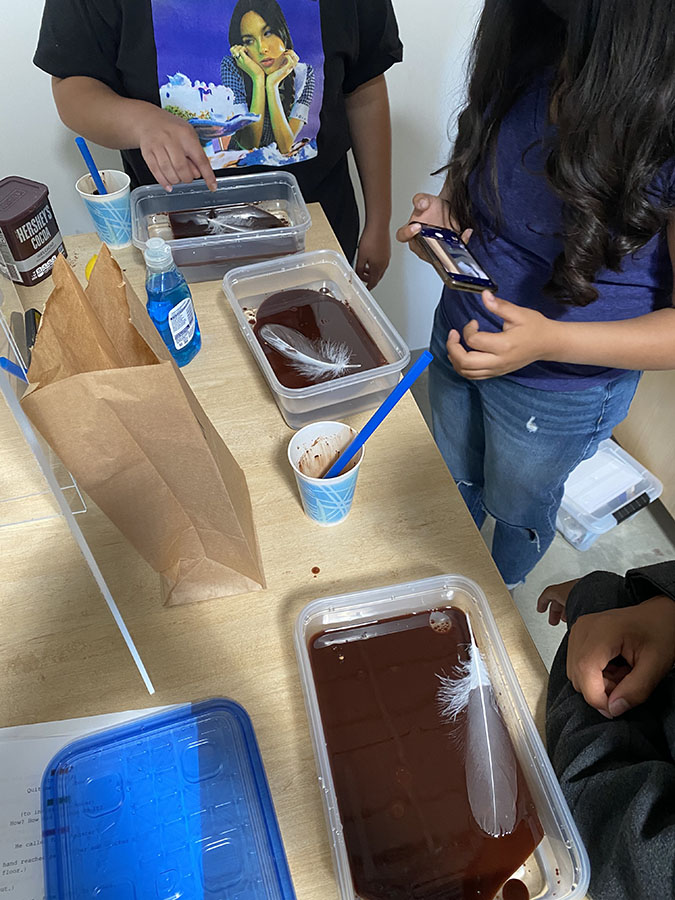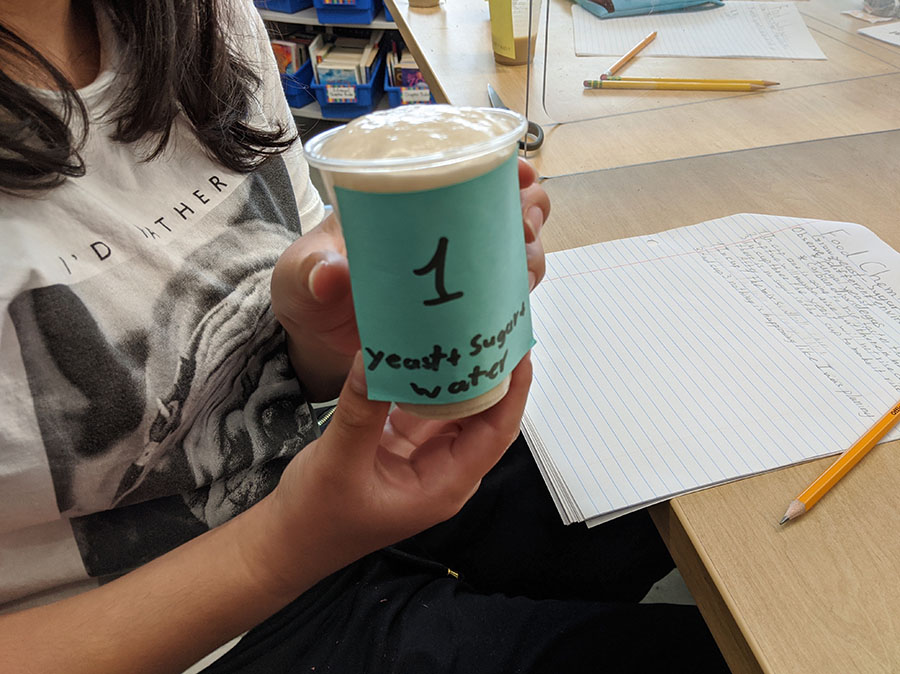CAMARILLO — Behind plexiglass guards and in Zoom rooms, Rio del Sol Elementary School fourth graders trained their eyes on their individual plastic cups filled with various yeast mixtures. Finally, thick, soupy bubbles began to rise above the rims of some cups.
“It has bubbles!”
“It’s rising to the top, it’s about to overflow!”
“I have bubbles, too!”
“Can I take mine home?”
The yeast fermentation experiment was a hit.
“The hands-on aspect of actually doing or making something really makes the experience more memorable,” said Rio del Sol teacher Jo Anna Mendoza said. “They get the joy of having fun with science and learning along the way.”
The activity resulted from one of 75 do-it-yourself science experiment videos created by CSU Channel Islands (CSUCI) students from various majors for more than 550 Rio del Sol STEAM Academy students in grades K through 8.
 “The videos the CSUCI students created were very professional, easy to understand and follow,” Mendoza added. “They were wonderful.”
“The videos the CSUCI students created were very professional, easy to understand and follow,” Mendoza added. “They were wonderful.”
Chemistry Lecturer Safa Khan, Ph.D. was inspired to launch the project after participating in the 2021 Science Carnival, an annual event coordinated by Professor of Chemistry Phil Hampton, Ph.D. The pandemic required that the Carnival be virtual, and a big success, with more than 5,000 students, parents and educators visiting the site.
“I usually have my students involved in six or seven sustainability projects such as restoring Long Grade Creek, making bee gardens on campus, doing food drives,” Khan said. “But with the pandemic, I had the students create these videos.”
Khan contacted local schools and the principal at Rio del Sol was interested, so Khan’s students researched online science experiments for kids and put together videos, which were distributed to Rio del Sol.
 The projects involved simple items and substances usually found at home, such as celery stalks in water with food coloring so kids could see the veins and leaves absorb the color in the sunlight and learn about plant life. Students could observe soil erosion by watching how water behaved on dirt versus cement or grass, or they could learn about enzymes by making Jell-O using fresh versus canned pineapple to see the chemical reaction.
The projects involved simple items and substances usually found at home, such as celery stalks in water with food coloring so kids could see the veins and leaves absorb the color in the sunlight and learn about plant life. Students could observe soil erosion by watching how water behaved on dirt versus cement or grass, or they could learn about enzymes by making Jell-O using fresh versus canned pineapple to see the chemical reaction.
“We had students see how the wind disperses seeds using fans and trees made of pipe cleaners and Play-Doh,” Khan said. “The students designed their own seeds with paper, sequins, paper clips, or cotton balls. They went around their campus chasing the cotton balls with their fans.”
Mendoza taught students both at home and in person. The lesson plans for Mendoza and the other teachers at Rio del Sol were easy to access online and any materials the students didn’t have were provided by the CSUCI students with campus funds earmarked for instructionally related activities.
CSUCI Biology student Natalie Olivares, who was in charge of uploading all of the videos onto a website she built, was impressed with her classmates’ creativity.
“I remembered when I was as young as these kids. The moment I became interested in science was when we did one of these hands-on experiments,” Olivares said. “When it was just textbooks, I didn’t grasp it as well, but once I did an experiment, it was real. I thought ‘Science is so interesting!’”
Olivares’ journey to a STEM major is exactly the kind of story Khan would like hear over and over again, from elementary school students—especially those whose numbers are not well represented in the STEM fields, such as women and scientists of color.
“This is the dream. For young students to see college students who look like them, from their own community, directly working with them to show them how science is related to their own lives,” Khan said. “That they would say ‘I can see myself as a scientist.’”
About California State University Channel Islands — CSU Channel Islands (CSUCI) is reimagining higher education for a new generation and era. We are an innovative higher education institution that enables students to succeed and thrive – serving as an engine for social and economic vitality that provides the intellectual resources necessary for a thriving democracy. With more than 7,000 students, 1,200 employees and 14,000 alumni, CSUCI is poised to grow in size and distinction, while maintaining one of the most student-focused learning environments in public higher education. Connect with and learn more by visiting www.csuci.edu or CSUCI’s Social Media.

